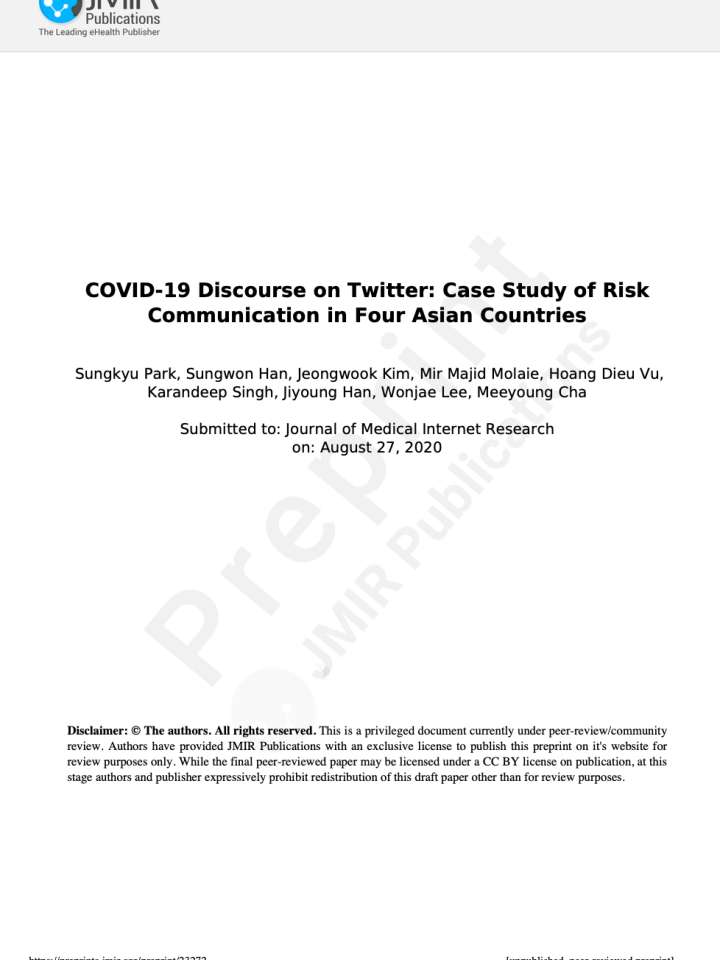COVID-19 discourse on Twitter: Case study of risk communication in four Asian countries
This research characterizes risk communication patterns by analyzing public discourse on the novel coronavirus in four Asian countries that suffered outbreaks of varying degrees of severity: South Korea, Iran, Vietnam, and India. The novel coronavirus disease (hereafter COVID-19) caused by severe acute respiratory coronavirus 2 (SARS-CoV-2) has caused a global pandemic. During this time, a plethora of information regarding COVID-19 containing both false information (misinformation) and accurate information circulated on social media. The World Health Organization has declared a need to fight not only the pandemic but also the infodemic (a portmanteau of information and pandemic). In this context, it is critical to analyze the quality and veracity of information shared on social media and the evolution of discussions on major topics regarding COVID-19.
The study finds that the official phases of the epidemic, as announced by the governments of the studied countries, do not align well with the online attention paid to COVID-19. Motivated by this misalignment, the paper develops a new natural language processing method to identify the transitions in topic phases and compare the identified topics across the four Asian countries. The study examines the time lag between social media attention and confirmed patient counts. The results confirm an inverse relationship between the tweet count and topic diversity.
Explore further
